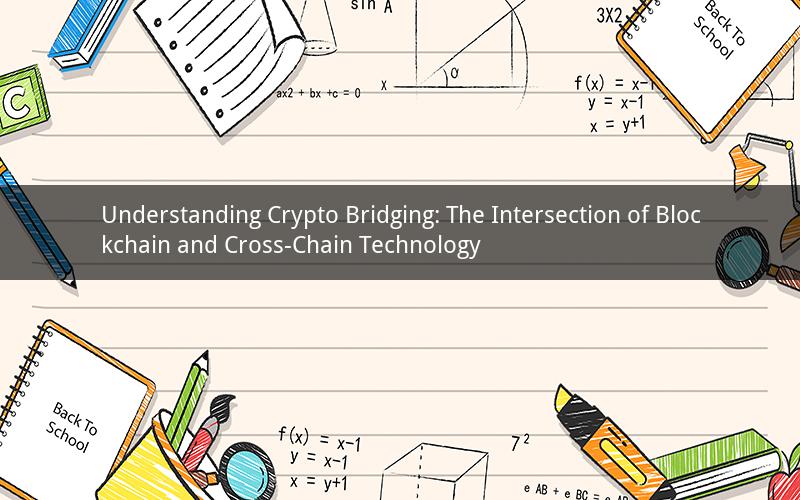
Introduction:
Crypto bridging, a term gaining momentum in the blockchain industry, refers to the process of transferring assets from one blockchain to another. It serves as a crucial bridge that connects different blockchains, enabling seamless interactions and interoperability. This article delves into the concept of crypto bridging, its significance, and its implications for the future of blockchain technology.
What is Crypto Bridging?
Crypto bridging is a technology that facilitates the transfer of digital assets between different blockchains. It allows users to move their assets, such as cryptocurrencies, tokens, and even NFTs, from one blockchain network to another without the need for manual conversions or exchanges. The primary goal of crypto bridging is to promote cross-chain interoperability and enhance the overall efficiency of blockchain ecosystems.
How Does Crypto Bridging Work?
Crypto bridging relies on a combination of smart contracts, oracles, and consensus mechanisms to ensure the secure and efficient transfer of assets between blockchains. Here's a simplified explanation of how it works:
1. Asset Locking: When a user wants to transfer assets from one blockchain to another, they lock the assets in a smart contract on the source blockchain. This action effectively holds the assets and prevents them from being used elsewhere.
2. Asset Verification: Once the assets are locked, a decentralized oracle verifies the transaction. Oracles are external systems that provide real-time data to smart contracts, ensuring the accuracy of the transaction.
3. Asset Minting: After verification, the smart contract on the source blockchain mints a new token representing the transferred assets. This new token is then sent to the user's wallet on the destination blockchain.
4. Asset Redeeming: When the user wants to redeem the transferred assets, they send the corresponding token back to the smart contract on the destination blockchain. The smart contract then burns the token, releasing the original assets back to the user's wallet on the source blockchain.
Significance of Crypto Bridging
1. Cross-Chain Interoperability: Crypto bridging promotes interoperability between different blockchains, allowing users to seamlessly transfer assets across networks. This interoperability is crucial for the growth and adoption of blockchain technology.
2. Enhanced Efficiency: By eliminating the need for manual conversions or exchanges, crypto bridging enhances the efficiency of blockchain ecosystems. Users can transfer assets in real-time, reducing transaction fees and processing times.
3. Enhanced Security: Crypto bridging leverages the security features of smart contracts and consensus mechanisms to ensure the secure transfer of assets. This security is crucial for protecting users' assets and preventing fraud.
4. Market Expansion: Crypto bridging opens up new opportunities for blockchain-based applications and services. By enabling cross-chain interactions, developers can create innovative decentralized applications that span multiple networks.
5. Tokenomics: Crypto bridging can significantly impact tokenomics, as it allows tokens to be circulated across different blockchains. This can lead to increased liquidity and market capitalization for certain tokens.
Common Crypto Bridging Solutions
1. Binance Smart Chain (BSC): BSC is a popular blockchain platform that supports crypto bridging through its cross-chain mechanism. Users can easily transfer assets from Ethereum to BSC and vice versa.
2. Polkadot: Polkadot is a multi-chain platform that aims to connect various blockchains through its cross-chain interoperability layer. Users can transfer assets between different chains using Polkadot's para-chains.
3. Cosmos: Cosmos is a network of independent blockchains that can communicate with each other through the Inter-Blockchain Communication (IBC) protocol. Users can transfer assets between Cosmos-based chains using this protocol.
4. Ethereum 2.0: Ethereum 2.0 is the highly anticipated upgrade of the Ethereum network, which will introduce cross-chain interoperability through its beacon chain and proof-of-stake mechanism.
5. Aragon: Aragon is a decentralized organization platform that enables the creation of self-governing organizations (DAOs). Users can transfer assets between different blockchains using Aragon's cross-chain capabilities.
Future Outlook for Crypto Bridging
The future of crypto bridging looks promising, as it continues to gain traction in the blockchain industry. As more blockchains adopt cross-chain interoperability solutions, we can expect to see increased adoption and growth in the crypto market. Here are a few key trends to watch:
1. Enhanced Security: As the technology matures, crypto bridging solutions will likely become more secure, reducing the risk of fraud and hacks.
2. Faster Transfer Times: With advancements in blockchain technology, the transfer times for assets across different chains will likely become even faster.
3. Broader Adoption: As more users and developers embrace crypto bridging, we can expect to see increased innovation and adoption of blockchain-based applications.
4. Regulatory Compliance: As crypto bridging solutions become more widespread, regulatory authorities may start to develop frameworks and guidelines to ensure compliance and protect users.
5. Competition: With the growing popularity of crypto bridging, we can expect to see increased competition among different solutions, leading to improved features and services.
Questions and Answers:
1. Q: Can crypto bridging be used for transferring any type of asset?
A: Yes, crypto bridging can be used to transfer various types of assets, including cryptocurrencies, tokens, and NFTs.
2. Q: Is crypto bridging safe?
A: Crypto bridging is generally safe, as it relies on smart contracts and consensus mechanisms to ensure the secure transfer of assets. However, users should always exercise caution and conduct thorough research before using any crypto bridging solution.
3. Q: What are the benefits of crypto bridging for developers?
A: Crypto bridging allows developers to create decentralized applications that can interact with various blockchains, enhancing the reach and potential of their projects.
4. Q: Can crypto bridging be used for transferring assets between different cryptocurrency exchanges?
A: Yes, crypto bridging can be used to transfer assets between different cryptocurrency exchanges, as long as the exchanges support the relevant bridging solution.
5. Q: Is crypto bridging the same as cross-chain interoperability?
A: While crypto bridging is a component of cross-chain interoperability, it specifically refers to the process of transferring assets between different blockchains. Cross-chain interoperability encompasses a broader range of technologies and solutions.